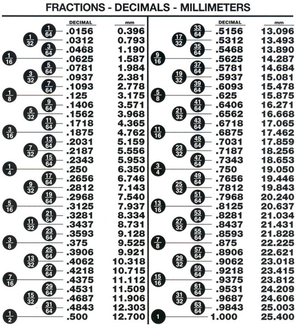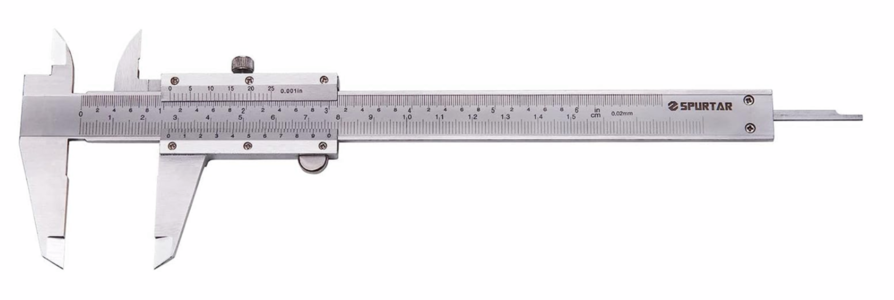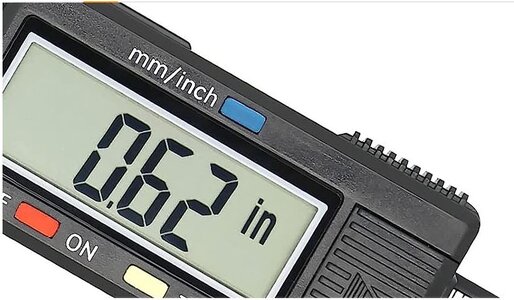I'm new to wood ship building as my wife purchased the Endeavour 1:64 scale for me (not a beginner model). I'm clueless to the measurements given in the plans. I have a caliper thinking it would help, but it doesn't. I have about 120 hours in just completing the hull as far as staining, painting, rudder assembly (damn those little brads on hinges). I need some help in deciphering the wood to use like what is 2x5x600, 2x5x40 and so on. Any help is greatly appreciated.
You are using an out of date browser. It may not display this or other websites correctly.
You should upgrade or use an alternative browser.
You should upgrade or use an alternative browser.
- Joined
- Dec 1, 2016
- Messages
- 5,135
- Points
- 728

the 2 x 5 x 600 the 600 is the give away the measurements are in mm seeing your US flag we americans use inches and i think the rest of the world uses millimeters
so to convert the measurements to inches there are charts for that
2mm = about 3/32 or .0937 5mm = 13/63 or .2031 and the 600mm = i don't know it is off the chart

so to convert the measurements to inches there are charts for that
2mm = about 3/32 or .0937 5mm = 13/63 or .2031 and the 600mm = i don't know it is off the chart

- Joined
- Dec 1, 2016
- Messages
- 5,135
- Points
- 728

ok got it 60mm = 23.6220472 inches a bit over 23 1/2 inches
easy (for european), but I guess it is the same when I read a measure like 1/4 etc. -> I do understand nothingI'm new to wood ship building as my wife purchased the Endeavour 1:64 scale for me (not a beginner model). I'm clueless to the measurements given in the plans. I have a caliper thinking it would help, but it doesn't. I have about 120 hours in just completing the hull as far as staining, painting, rudder assembly (damn those little brads on hinges). I need some help in deciphering the wood to use like what is 2x5x600, 2x5x40 and so on. Any help is greatly appreciated.
2*5*600 this is a strip of 600mm or 60cm length with a square of 2mm to 5mm (so width is 5mm and thickness is 2mm)
2*5*40 - a shorter piece with 40mm or 4cm length, thickness of 2mm and width of 5mm
- Joined
- Apr 3, 2023
- Messages
- 104
- Points
- 88

Coming from the generation in Canada that started out with Imperial units and then went metric in the 70's, my world is a mix of both and I flip between them without thinking about it. I drive in kilometres but in my shop I'm all about inches. My thermometer temperatures are Celsius, but I bake in Fahrenheit. So yeah, kind of messed up. 
But back to the OP and his questions, I think the far simplest solution... given that pretty much all kits are done to metric specs, is to invest a dollar in a ruler that displays mm's and cm's. If the budget allows for it, I'd also suggest picking up a set of calipers that provide metric (mm) measurement as well. You can find both pretty readily on Amazon, using an example of a potential eStore solution.
If you're just trying to quickly get your head around general dimensions and not actually measuring anything for accuracy, you can use these two quick guidelines to help you out. A foot equates to roughtly 30 cm or 300 mm (30.4 cm and 304 mm respectively if you want to be really exact about it). And an inch is approximately 2.5 cm or 25 mm (again, 2.54 cm and 25.4 mm to be exact).
If you would like an easy online calculator for doing the conversions, here's one that can be of use:
https://www.rapidtables.com/convert/length/mm-to-inch.html
But back to the OP and his questions, I think the far simplest solution... given that pretty much all kits are done to metric specs, is to invest a dollar in a ruler that displays mm's and cm's. If the budget allows for it, I'd also suggest picking up a set of calipers that provide metric (mm) measurement as well. You can find both pretty readily on Amazon, using an example of a potential eStore solution.
If you're just trying to quickly get your head around general dimensions and not actually measuring anything for accuracy, you can use these two quick guidelines to help you out. A foot equates to roughtly 30 cm or 300 mm (30.4 cm and 304 mm respectively if you want to be really exact about it). And an inch is approximately 2.5 cm or 25 mm (again, 2.54 cm and 25.4 mm to be exact).
If you would like an easy online calculator for doing the conversions, here's one that can be of use:
https://www.rapidtables.com/convert/length/mm-to-inch.html
Regardless of the scale, Stop converting! If your plans are metric, then get yourself a metric scale/ruler and work the dimensions as given on the drawings. If your model is European (or Asian) the drawings and materials will all (most likely) have been milled to metric dimensions.
When you start drawing your own plans, it will be time to worry about scale and which material dimensions make the most sense.
When you start drawing your own plans, it will be time to worry about scale and which material dimensions make the most sense.
- Joined
- Apr 3, 2023
- Messages
- 104
- Points
- 88

FWIW, I agree... with caveats. lolRegardless of the scale, Stop converting! If your plans are metric, then get yourself a metric scale/ruler and work the dimensions as given on the drawings. If your model is European (or Asian) the drawings and materials will all (most likely) have been milled to metric dimensions.
When you start drawing your own plans, it will be time to worry about scale and which material dimensions make the most sense.
I stand to be corrected, but I personally have never even seen a ship model kit that was measured in anything other than metric (mm's). However, if you're working from original ship plans that are in imperial units and scaling down for a model, then a conversion tool can be bloody handy. Especially since the vast majority of materials sold for model ship building are going to be in metric sizes.
IMHO, the more the OP begins to work and think in mm's, the easier it's going to become for him to visualize what 5mm looks like, thus making material selection faster and easier. If the instructions say you need a 0.5x5x300 walnut strip for second planking layer, you can tell by looking at your supplies which strips those are... sure, the walnut would be a dead giveaway, but I think everyone knows what I'm getting at. Plus, calipers that measure in mm make sizing masts easier, as well as doing a quick check if you're unsure that piece of square stock is a 4 or 5mm piece, or if that deadeye you need is a 3 or 4mm version.
Using the Amazon example, here are some links for you:
12" mm and inch clear flexible ruler
metric mm caliper
You should also be able to find metric rulers at your local Staples or other stationary store, and certainly check around your local hardware shops to see what they're carrying for calipers. The only reason I provided the links to Amazon is that they're typically less expensive, but if you don't want to wait a couple of weeks, then sourcing locally and paying a little more is the way to go. I like the bundles of inexpensive rulers because I can butcher them as much as I want for convenience (marking them up with a fine tip permanent marker, etc.), and you can find bundles of 30 for around $10. Cheap like borscht.
I totally agree. Why convet? It is what it is. If it's metric then use a metric scale and think metric. It doesn't hurt. HahahahaRegardless of the scale, Stop converting! If your plans are metric, then get yourself a metric scale/ruler and work the dimensions as given on the drawings. If your model is European (or Asian) the drawings and materials will all (most likely) have been milled to metric dimensions.
When you start drawing your own plans, it will be time to worry about scale and which material dimensions make the most sense.
https://joshmadison.com/convert-for-windows/ been using this app, for twenty years. doesn't get much better.the 2 x 5 x 600 the 600 is the give away the measurements are in mm seeing your US flag we americans use inches and i think the rest of the world uses millimeters
so to convert the measurements to inches there are charts for that
2mm = about 3/32 or .0937 5mm = 13/63 or .2031 and the 600mm = i don't know it is off the chart
View attachment 391557
- Joined
- Dec 1, 2016
- Messages
- 5,135
- Points
- 728

- Joined
- Apr 3, 2023
- Messages
- 104
- Points
- 88

Caliper's are useful, but a digital one is severe overkill, IMHO. I have a basic, inexpensive manual one that provides reading of the scale that's etched in the metal. I use it occasionally for confirming sizing of material, such as when the kit provides both a 4mm and 5mm square stock. But more commonly, I use it for confirming the diameter of my masts and spars as I taper them to match the plans.I have a caliper thinking it would help, but it doesn't.
calipers have a MM to inch button



